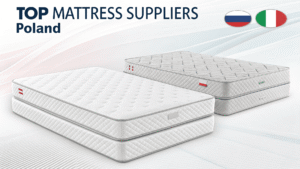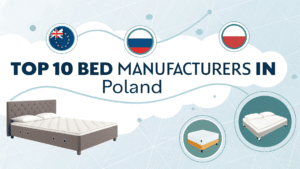What’s the difference between bouclé and velvet beds?
Bouclé beds are rising fast in cold-climate markets, while velvet beds dominate in areas seeking a rich, glossy finish. Choosing the right fabric means more than just look — it affects returns, packing, and satisfaction.
Bouclé offers a soft, organic texture. Velvet delivers a glossy, luxury touch. Each fabric has unique performance differences in price, durability, shipping, and customer experience.

As a manufacturer working with retailers in Canada, the UK, and Australia, I’ve seen how fabric choice affects everything — from warehouse handling to e-commerce1 reviews. Below I’ll break it down, based on actual feedback and years of export experience.
Is bouclé better than velvet?
Bouclé and velvet2 serve different markets. Bouclé3 leans toward cozy, organic looks. Velvet leans luxury.
Bouclé3 fits warm, minimal, seasonal rooms. Velvet fits shiny, bold, glamorous styles.

Retailers often ask which one "sells better." The real answer is: it depends on your customers. For example, in Canada and Germany, where winters are long, bouclé feels warm and welcoming. Shoppers associate it with softness and quiet luxury.
In contrast, velvet beds with a glossy sheen perform better in Australia and the UK. They fit modern lighting and metal decor. If the target market shops for a "hotel-style" bedroom, velvet usually wins.
Velvet also works well with bold colors. Navy blue, emerald green, and even mustard yellow velvet beds are common sellers in Australia. Bouclé sticks to soft beige, off-white, and light gray palettes. These influence how you style showrooms or product photography for online listings.
What are the disadvantages of bouclé?
Bouclé feels nice — but it's not invincible.
Bouclé tends to trap lint, absorb moisture, and can be tricky to clean if stained.

Bouclé has a looped, open weave. That texture feels soft and inviting. But it also means dust and hair get caught easily. For online buyers who have pets, this can be a concern. In humid regions like Southeast Asia, we don’t recommend using bouclé due to its tendency to trap moisture and smell over time.
In dryer climates like Canada or Northern Europe, these issues are far less noticeable. We’ve shipped bouclé beds for years into Germany with almost no complaints, while the same fabric brought negative feedback from retailers in coastal Asia.
For long-term use, especially in sofas or bench seating, bouclé can pill. For showroom displays or beds with occasional use, this is rarely an issue.
Is bouclé a good fabric for a bed?
Yes. Especially for beds in lifestyle-driven brands.
Bouclé adds visual warmth, masks minor wear, and works well in soft-color bedroom settings.

We often use bouclé for headboards because it draws people in. Shoppers in retail stores walk over and touch it — that physical engagement boosts conversion. Online, bouclé photos feel more "real" and lifestyle-oriented. This helps when targeting Pinterest-inspired or Scandinavian-style buyers.
For B2B buyers like Jack in Canada, we suggest using bouclé beds in catalog shots that lean Nordic or Japandi. Beige walls, minimal lighting, and wooden side tables complete the look. Bouclé doesn’t try to be loud — it sells a feeling.
The only limitation is that bouclé doesn't take dye as evenly as velvet. So color matching across batches must be carefully controlled during production.
Is bouclé more durable than velvet for beds?
Not always. Velvet usually scores higher in abrasion tests.
Velvet resists wear better. Premium bouclé can still last years in home use if well-constructed.

Most velvet used in beds is short-pile polyester. It’s smooth, tight, and less likely to snag. This gives it better rub resistance. For high-traffic use — like Airbnb or hotel furniture — we always recommend velvet.
Bouclé is thicker and hides dents well. But it can snag on zippers, rough fabric, or kids’ toys. The solution? Use premium-density bouclé (18–28 RMB/m) with tighter loops and strong backing. That’s what we use for our Canadian clients who want warmth without sacrificing wear resistance.
If the bed will be moved often or leaned on heavily, velvet is the safer choice. If it’s a static, elegant feature — bouclé shines.
Do bouclé and velvet beds look different in room decor?
Yes — and very clearly.
Bouclé gives off a cozy, minimal feel. Velvet shows glamour and shine.

When staging beds for catalog shoots or online photos, styling starts with fabric. Bouclé works with neutral palettes: oak floors, white linen, cream curtains. It fits lifestyle branding and slow living.
Velvet is the opposite. It fits rich contrasts: gold lamps, dark green walls, and high-end finishes. If the goal is to catch the eye on a website thumbnail, velvet often grabs more attention.
This isn’t just visual. Buyers interpret bouclé as "soft and warm." Velvet is seen as "luxury and bold." That mental cue impacts their purchase decision — especially online, where touch isn’t possible.
What are the disadvantages of a bouclé sofa?
Bouclé sofas can age faster in busy households.
Bouclé fabric may pill or trap dust with heavy use.

For sofas, the concern with bouclé is pilling and lint. Unlike a bed that stays mostly untouched, a sofa gets sat on, leaned against, and often cleaned with cloths or vacuums. All of these create friction.
To prevent wear, we recommend higher GSM (grams per square meter) fabrics and yarn with low-fuzz surfaces. We also advise against bouclé for rental apartments or large public lobbies.
Retailers should always test swatches, and if offering bouclé sofas online, include close-up texture shots so customers understand what to expect.
Which fabric—bouclé or velvet—is more suitable for bulk packaging and long-distance shipping?
Velvet wins here.
Velvet compresses well and rebounds better after vacuum packing. Bouclé is bulkier and more sensitive.

We do tight vacuum packing for our e-commerce clients. Velvet folds flat, has elastic memory, and rarely shows marks when unpacked. Bouclé can press unevenly, leading to small dents or fold lines. Sometimes a light steam can fix it, but not always.
If you ship long-distance — like from China to Canada — this matters. Velvet saves space, lowers volume cost, and leads to fewer customer complaints.
Bouclé can still work. But we recommend special inner packaging: air column bags, thick PE sleeves, or foam supports. These raise cost slightly, but protect texture.
Which type of bed upholstery has lower complaint rates in online sales?
Velvet tends to perform better.
Velvet resists wrinkling and color mismatches more than bouclé in e-commerce deliveries.

Returns often come from unmet visual expectations. Bouclé texture can look patchy under certain light. Velvet looks uniform in photos and reality.
When packed long-term, velvet still looks clean. Bouclé sometimes arrives with indents, needing fluffing. If your buyers are casual consumers — not interior designers — velvet avoids misunderstandings.
Some of our e-commerce clients pair bouclé with a small instruction card: "Due to the texture, slight variations are natural." That reduces return rates, especially on marketplaces like Wayfair.
Is bouclé easier to maintain in retail warehouse conditions?
No.
Bouclé collects lint and reacts more to moisture than velvet.

For warehouses without climate control, bouclé becomes tricky. It catches dust easily. In humid areas, it might absorb moisture and smell. That’s why we recommend velvet for mass storage or when the beds stay boxed for months.
In photo studios, bouclé beds need lint rollers often. Velvet just needs a quick wipe.
Still want to use bouclé? Then control conditions: dry storage, breathable covers, and limited light exposure.
Do velvet beds show visible damage after vacuum packing?
Generally, no.
Premium velvet recovers shape well after vacuum packing.

When we ship beds compressed into cartons, velvet almost always comes out smooth. Poor-quality velvet can crease, but high-grade versions with good GSM bounce back fast.
Bouclé doesn't compress as much. You risk uneven bumps or flat spots. If your retail model requires compressed shipping, velvet is a safer bet — especially for platforms like Amazon or Walmart.
Which fabric type helps reduce return rates for e-commerce sellers?
Velvet reduces returns better.
Velvet shows fewer surprises in color, wrinkles, or texture after unpacking.

Most returns in e-commerce happen when products don’t look like the photos. Bouclé has natural texture variation, and customers may say “this looks used” even if it’s brand new.
Velvet is glossy, predictable, and even. It rarely changes under lighting. If your market includes less design-savvy customers, velvet is safer.
That said, bouclé buyers are often more accepting — they buy based on look and feeling, not perfection. If your audience shops for mood, not specs, bouclé sells well.
What’s the price difference between bouclé and velvet in wholesale?
| Fabric Type | Wholesale Price (RMB/m) | Notes |
|---|---|---|
| Bouclé | 13–28 | Higher-end bouclé costs more, but feels richer |
| Velvet | 7–24 | Wide range — from simple plain velvet to premium embossed styles |

Bouclé is not always more expensive. But high-grade bouclé that feels tight, full, and plush does cost more. Velvet comes in wider price bands — and cheaper options still look good in photos.
Retailers often mark up bouclé beds higher because of the perceived value. So even if the cost is more, the resale price supports a stronger profit.
Our clients usually place velvet SKUs as entry-level, then use bouclé for premium or seasonal pieces.
Which fabric is more resistant to wrinkles after shipping?
Velvet wins.
Velvet resists wrinkles and creases better than bouclé during long transit.

For beds shipped to Europe or Canada, transit can take weeks. Velvet keeps its shape in vacuum or tight boxing. Bouclé sometimes needs steaming or reshaping.
For e-commerce or drop shipping, velvet leads to fewer customer issues. Bouclé needs better packing and clear photos to set buyer expectations.
We offer both, but always ask: where is it going, how is it packed, and who is the end customer?
Conclusion
Choosing between bouclé and velvet isn’t about better or worse — it’s about fit. Each fabric speaks to a different buyer, logistics plan, and retail channel.
-
Understand the unique challenges and strategies for marketing Bouclé beds in e-commerce. ↩
-
Discover why velvet is favored for its luxurious appearance and durability, perfect for modern decor. ↩
-
Explore the unique qualities of Bouclé fabric, known for its soft texture and warmth, ideal for cozy bedroom settings. ↩ ↩




